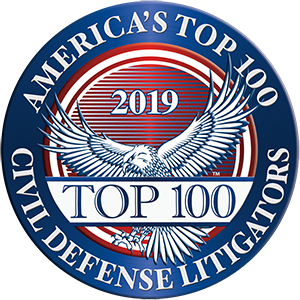In the past ten years I have represented and consulted with many clients in matters that often fall into two basic fact patterns:
Scenario No. 1: Involves an elderly, often widowed parent, living somewhat independently in their own home, but they are being taken advantaged of financially by that one adult child that never managed to make it on their own.
Scenario No. 2: Involves an elderly or dependent adult without close family around who falls victim to a caregiver, neighbor, or other “friend” that takes financial advantage of the isolated elder. Often this scenario arises where the victim has no living children or whose children are not frequently around due to either geography or a breakdown in that relationship.
There are many other situations in which an elder or dependent adult can fall victim to fraud, undue influence, and other forms of financial abuse, but these scenarios are the most common that I have seen. The financial harm is sometimes small – a few dollars here and there that the victim either didn’t authorize in advance or felt pressured to give. Other times, there is extreme financial abuse that can leave the victim without sufficient funds to provide for their own care. At times the financial abuse is also coupled with negligent care, physical or emotional abuse, or interferes with necessary medication or appropriate medical care.
In most cases, having a good estate plan already in place when such abuse arises gives me access to a greater number of resources that can be used to protect the elderly victim. One of those resources is an Elder or Dependent Adult Abuse Restraining Order (referred to in the remainder of this post as and “Elder Abuse Restraining Order” or “EARO”). An EARO is a powerful tool to stop and prevent both financial and physical abuse of persons over the age of 65. An EARO can similarly be used to protect a dependent adult who is between the ages of 18 to 64, who has a physical or mental limitation that restricts their ability to carry out normal activities, or to protect his or her rights.
Once an EARO is in place, the defendant’s name and description is entered into a statewide database that can be accessed by law enforcement allowing them to immediately identify and arrest that person if they violate the restraining order. These restraining orders often require that the defendant stay away from the victim, move out of the victim’s home, and can prohibit them from accessing or trying to access the victims funds. The orders can also provide for restitution and payment of the victim’s attorney’s fees.
An Elder Abuse Restraining Order does not require that the elder has an estate plan. However, unlike domestic violence or civil harassment restraining orders, Elder Abuse Restraining Order can be brought to the Court by certain people other than the victim. Specifically, an Elder Abuse Restraining Order can be filed by not only the elder or dependent adult, but also, in the right circumstances, by their Conservator, Agent acting under a Power of Attorney, or their Trustee. Starting next month, Adult Protective Services will also be authorized to file on behalf of a victim – although it is not anticipated that the high caseload social workers currently carry will allow them the time and resources to pursue.
That an EARO can be brought by someone other than the victim is a significant benefit where the elder is unable either physically or mentally to go through the restraining order process which typically entails one to two appearances before a Judge, the completion of multiple forms, and multiple filing and service procedures. While hiring an attorney makes this process simpler for the victim, the victim is generally still required to appear before the Court, in person, in order to obtain a permanent restraining order outside the context of a criminal proceeding. If the EARO is instead brought by the Conservator, Trustee, or Attorney-in-Fact operating pursuant to a Power of Attorney, that individual rather than the victim can engage in the most laborsome aspects of the process. While a Conservator is appointed by the Court through a Court proceeding, having a Trustee or Attorney-in-Fact in place when the need arises is the product of a good estate plan that includes a living trust and appropriate power of attorney designations. When creating such documents, a person needs to consider carefully who they believe is most likely to be able to really protect their interests and to fight for them if necessary when that person is unable to do so for themselves.
TLD Law puts an emphasis in not only providing clients with an estate plan, but with practical advice that we have developed through our lawfirms’ 50 plus year history in estate planning. As your life long legal partner, we are also experienced in standing by you or your representative should the time ever come to protect you and your interests from financial abuse.
The author of this post is Jennifer Lumsdaine. If you wish to contact Jennifer directly, please email her at jenniferlumsdaine@tldlaw.com






